The Whale Release and Strandings group has given many community presentations to both adults and children - bringing many interactive activities and artifacts such as whale and turtle bones!
Download PDFs:
Here you can get PDFs on what to do in a stranding, the whale identification booklet and the glossary of whale words.
45' male sperm whale at Famine Point, Burin Peninsula, Newfoundland. Friday, October 3rd, 2008
Annual Newfoundland and Labrador Whale Festival at Cape Spear National Historic site
2011
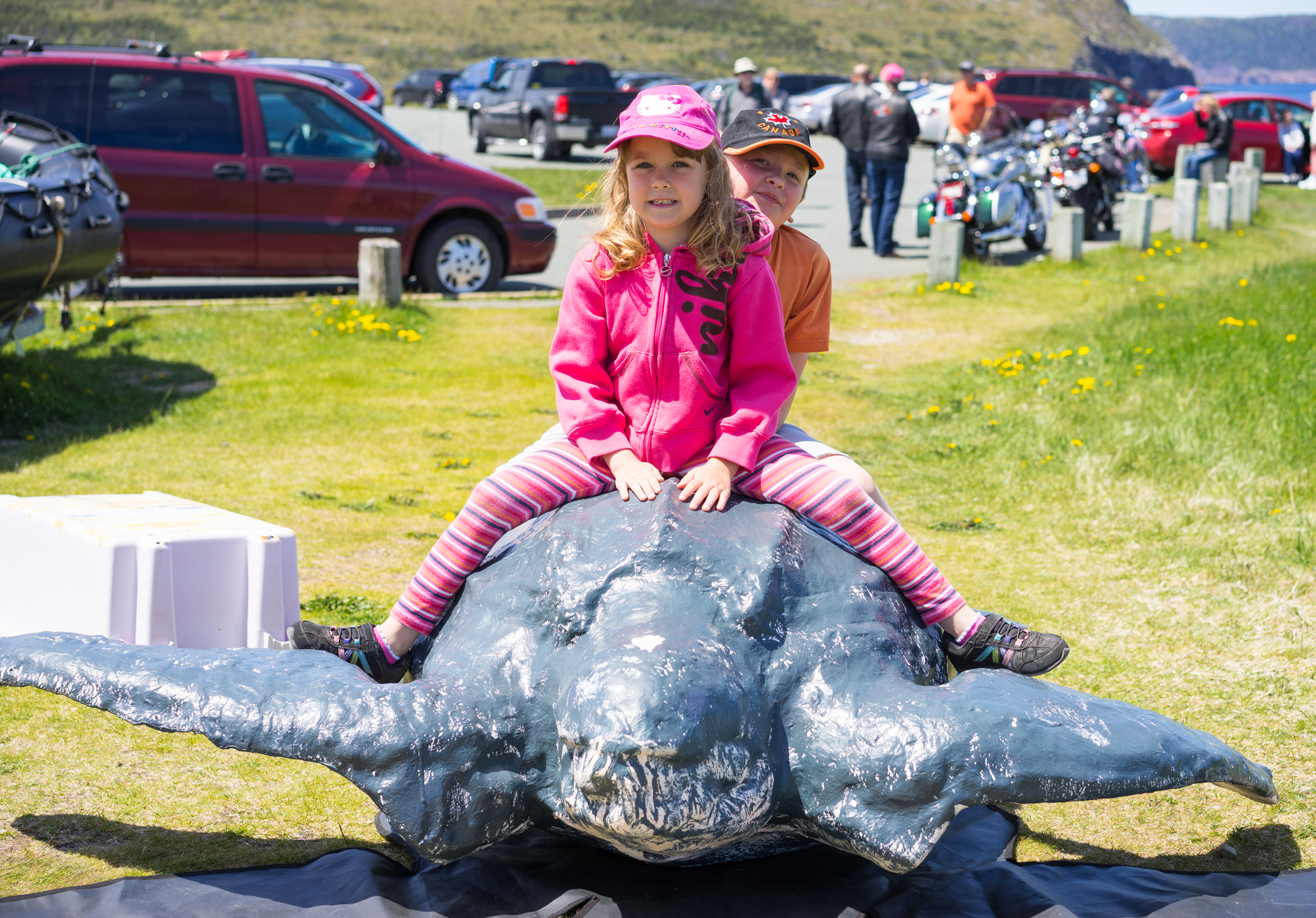
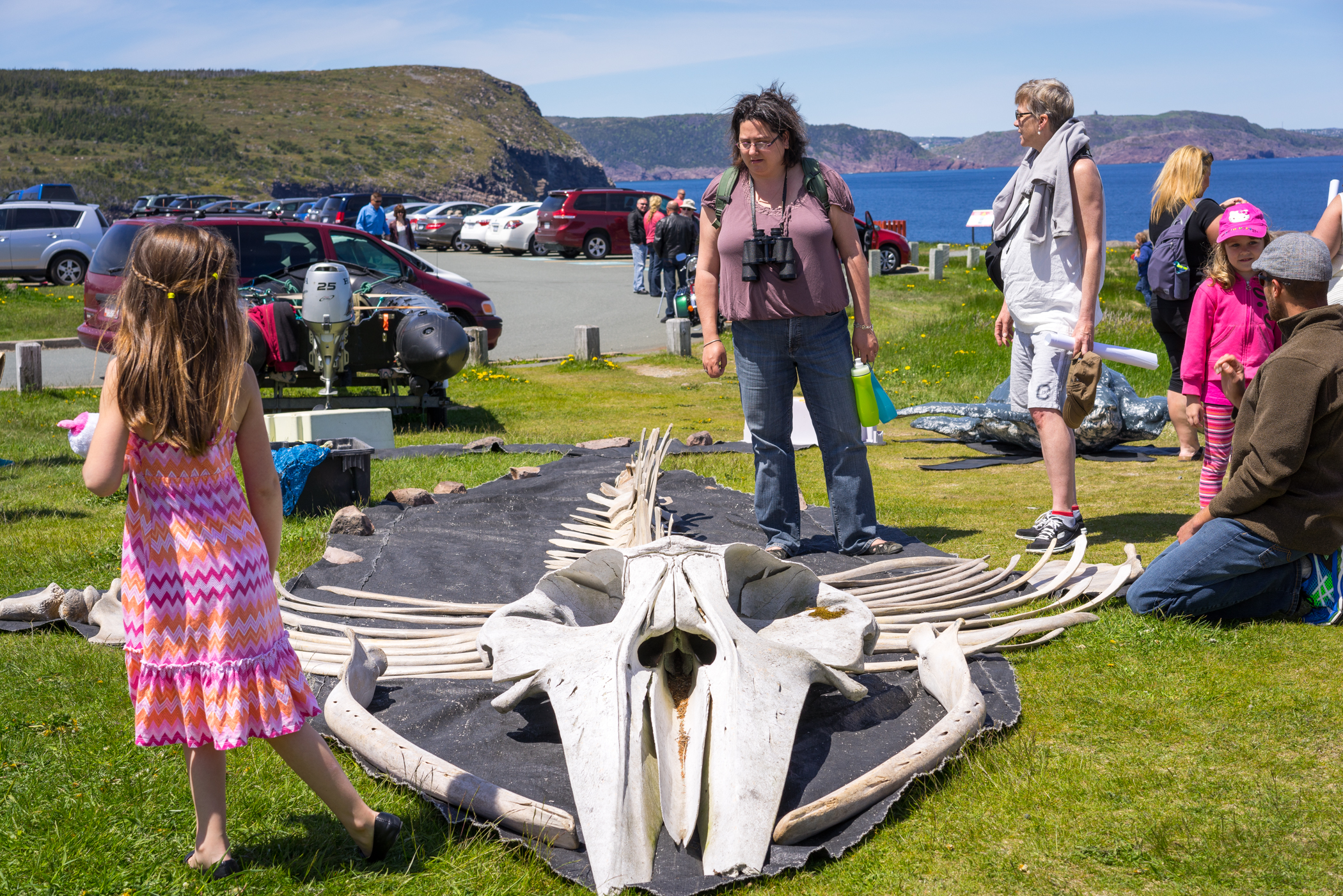
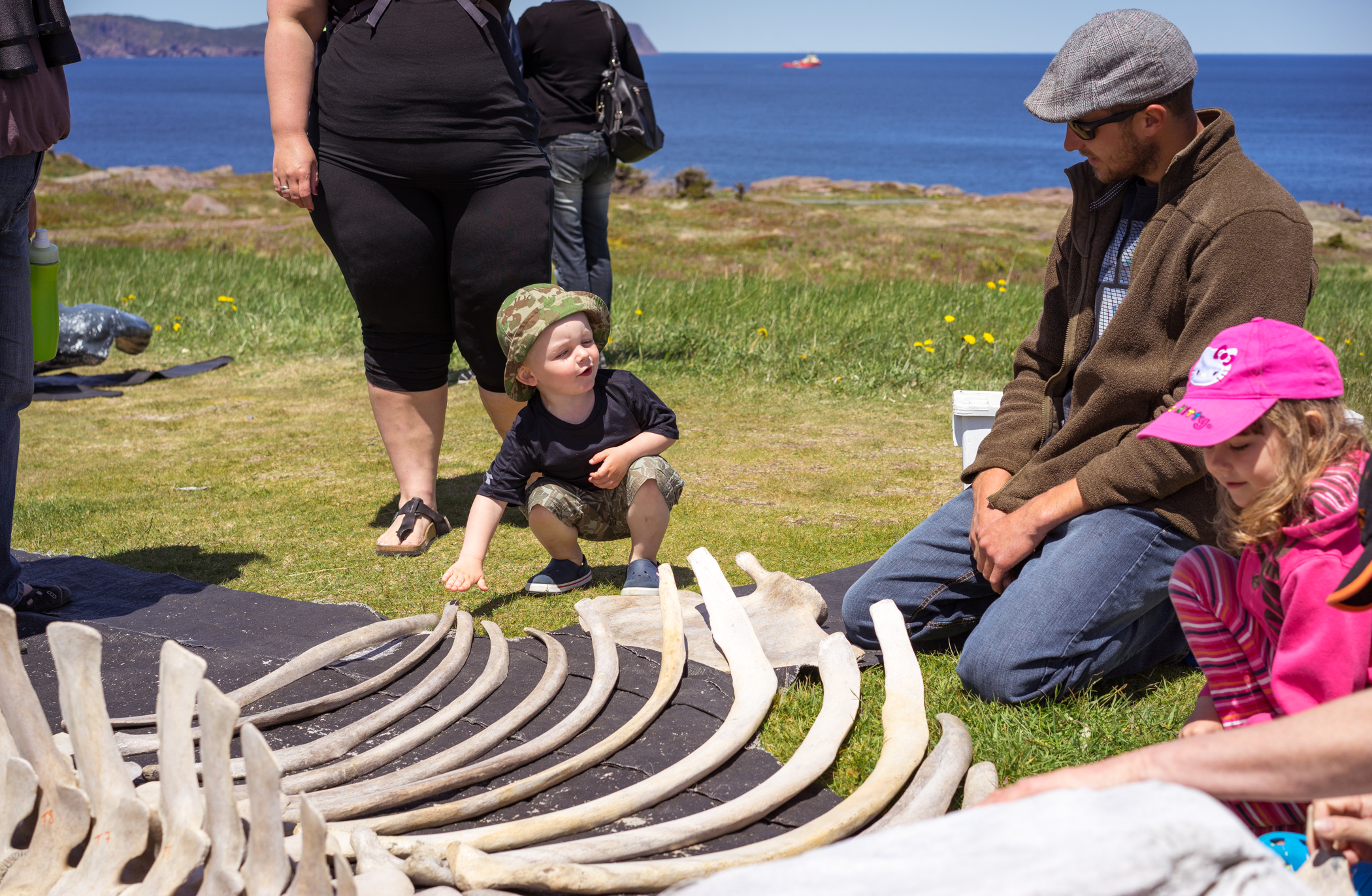
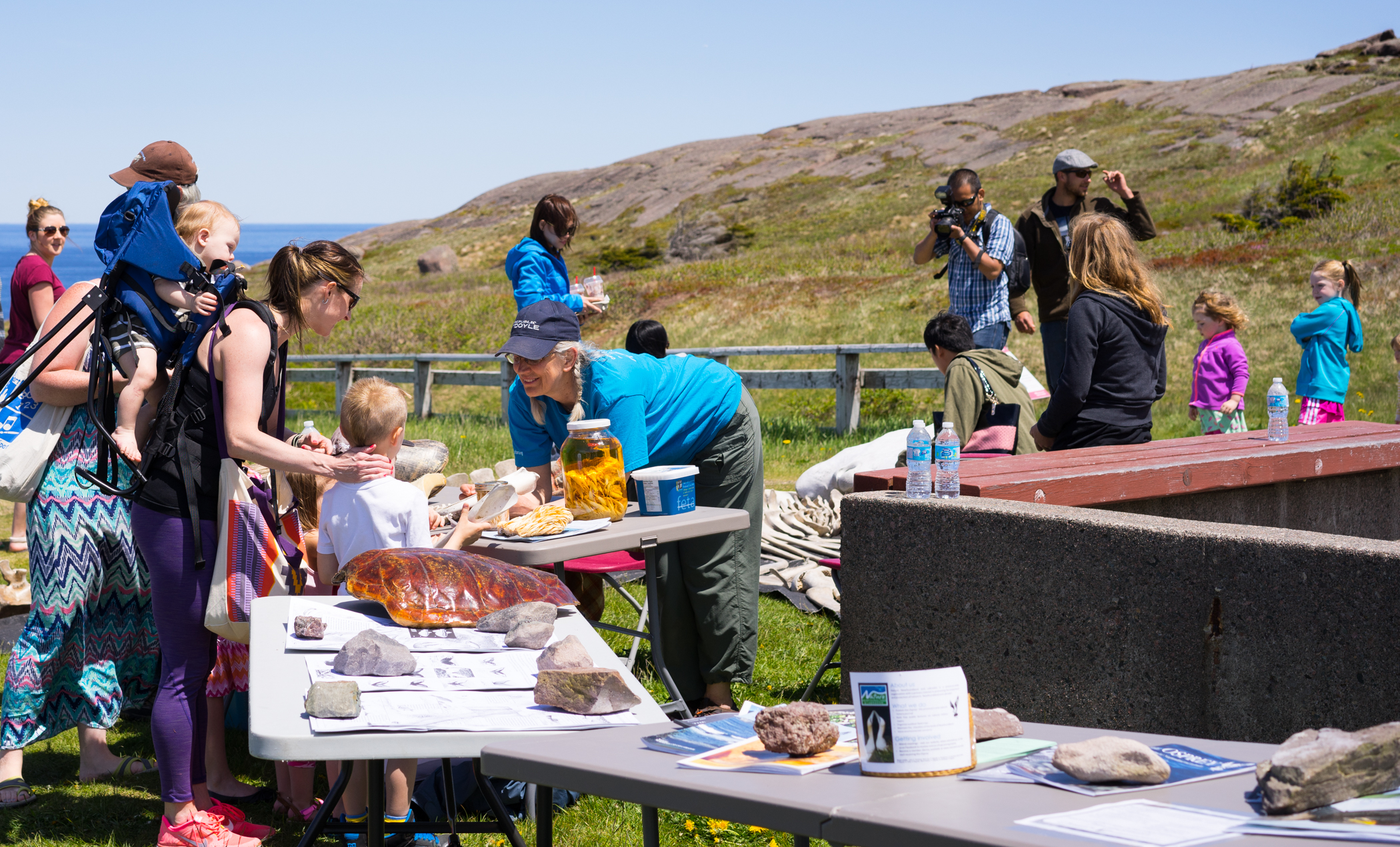
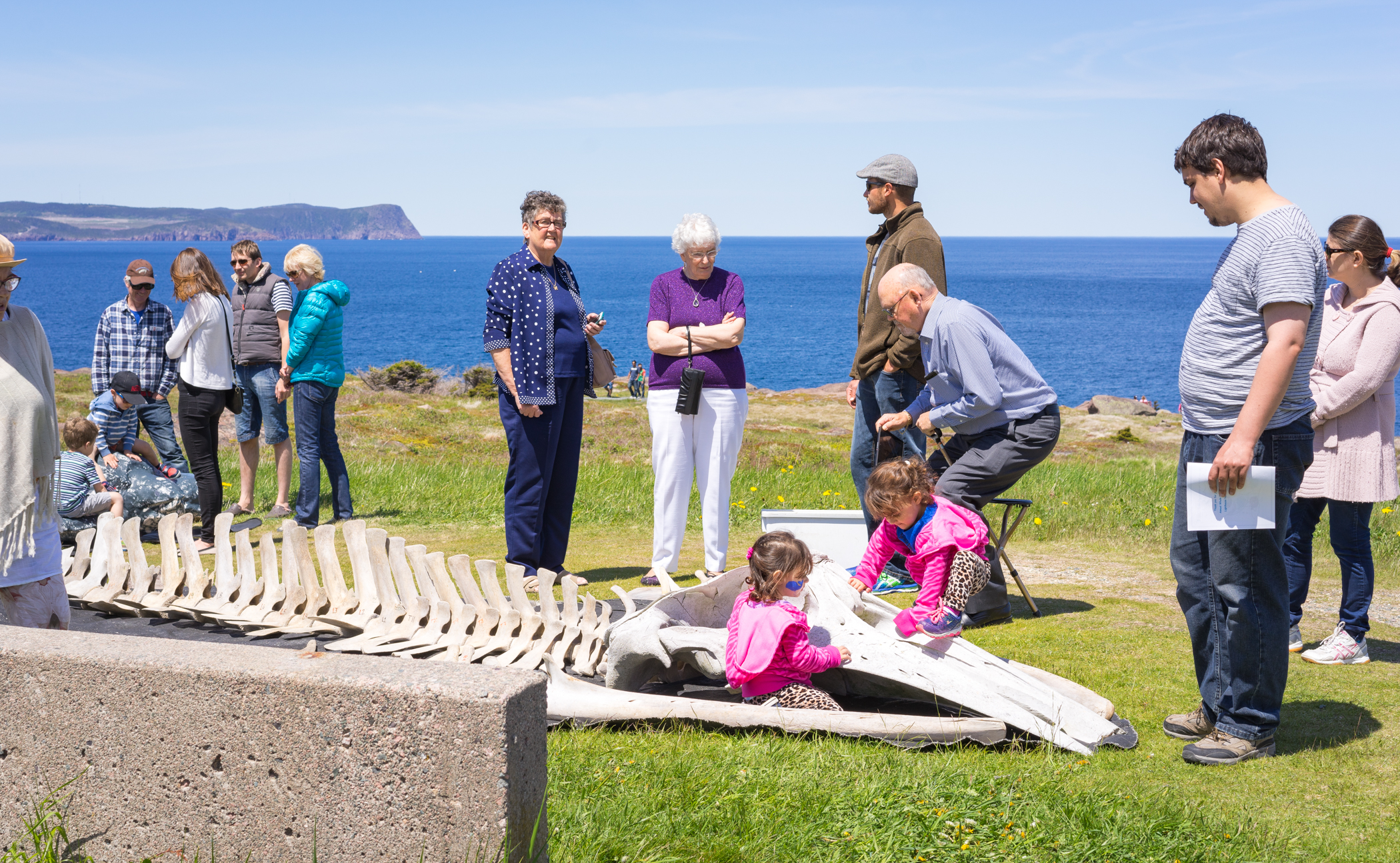
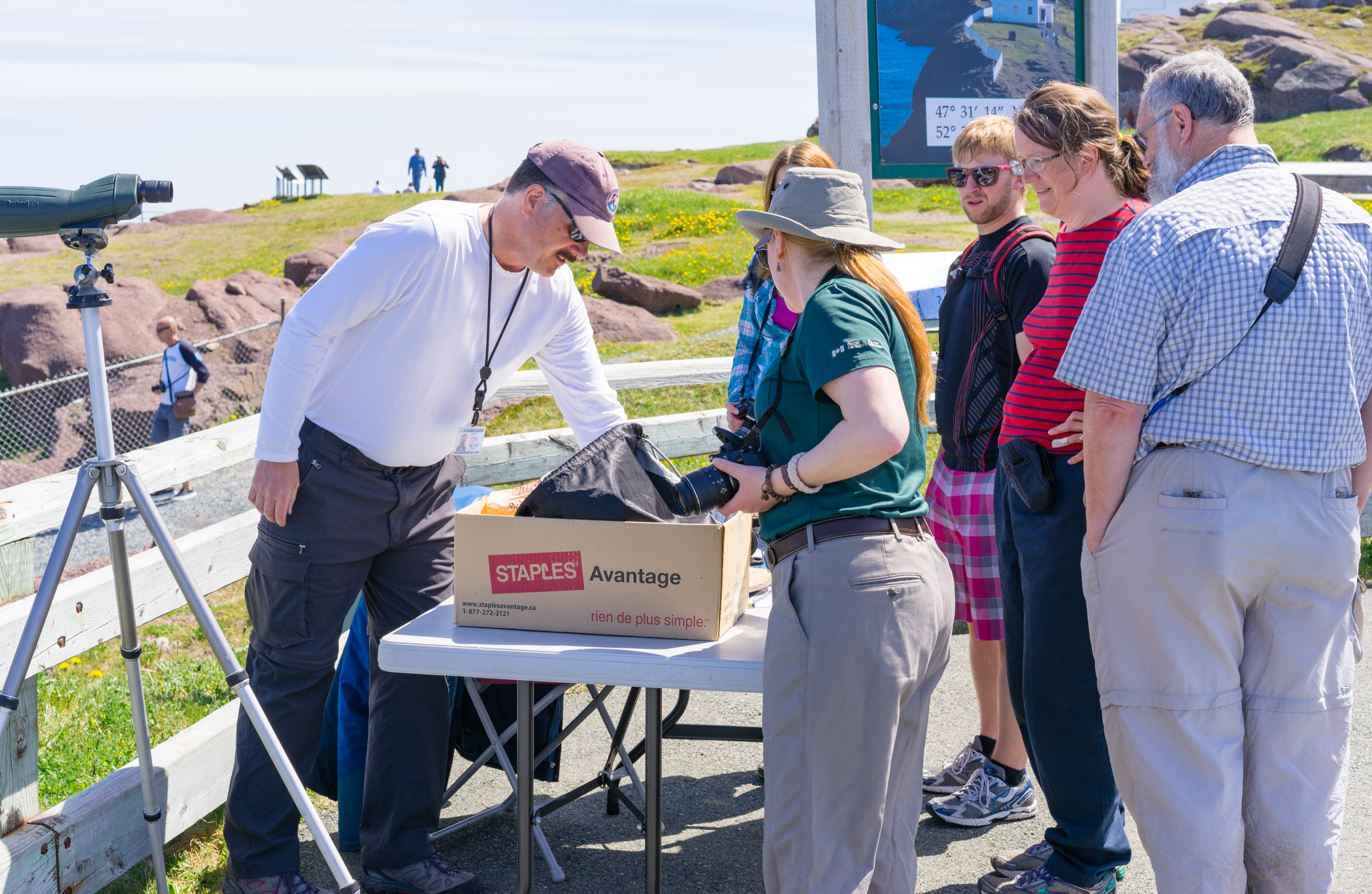
2015
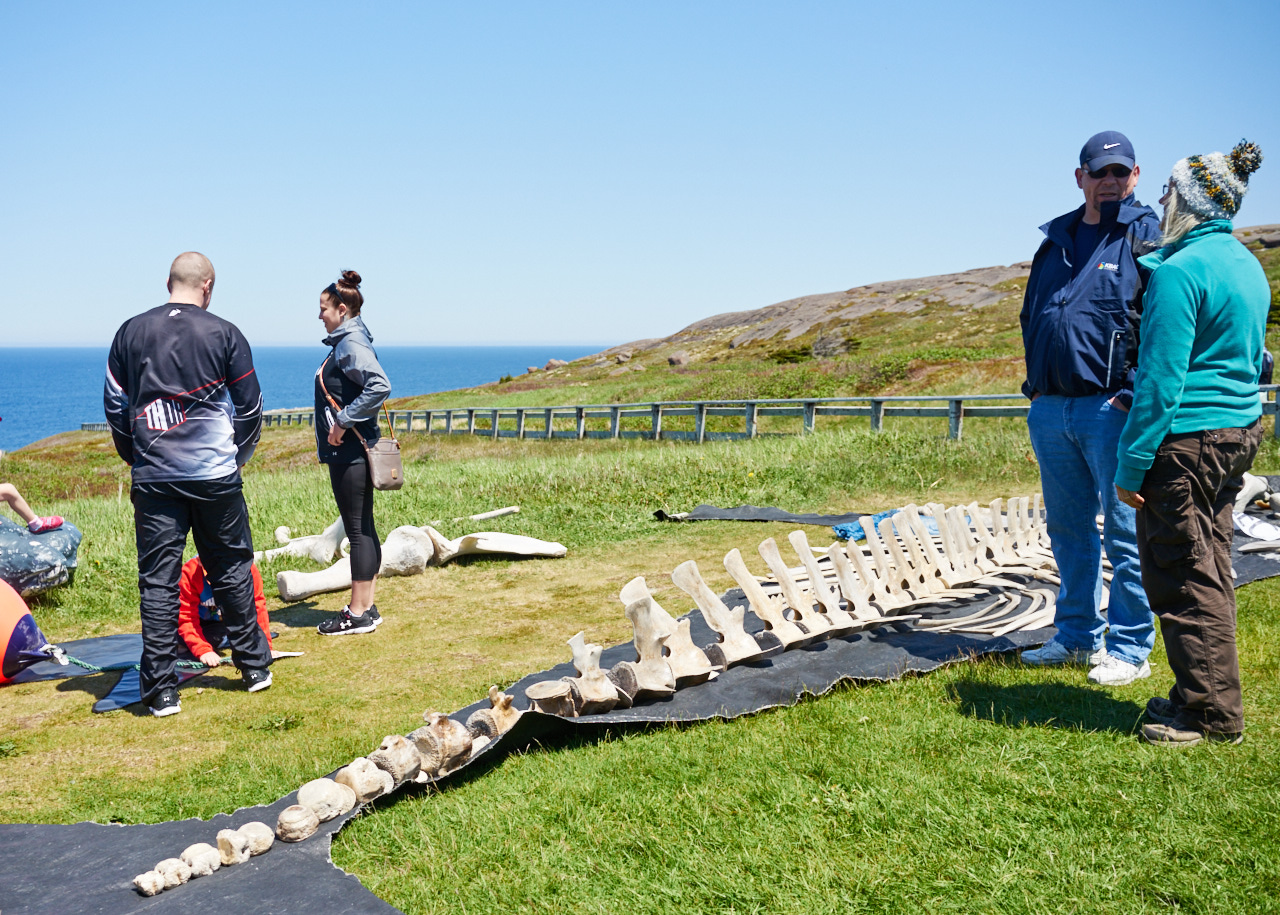
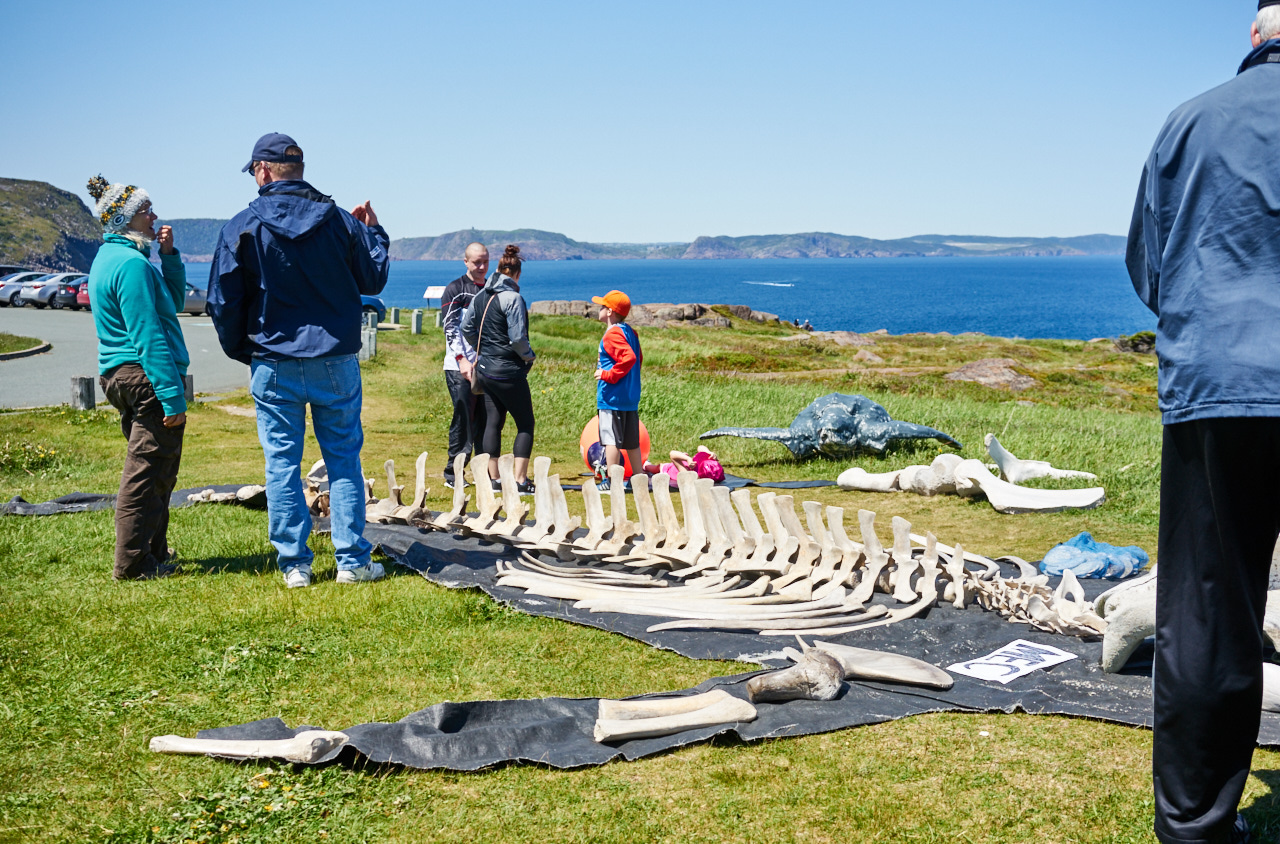
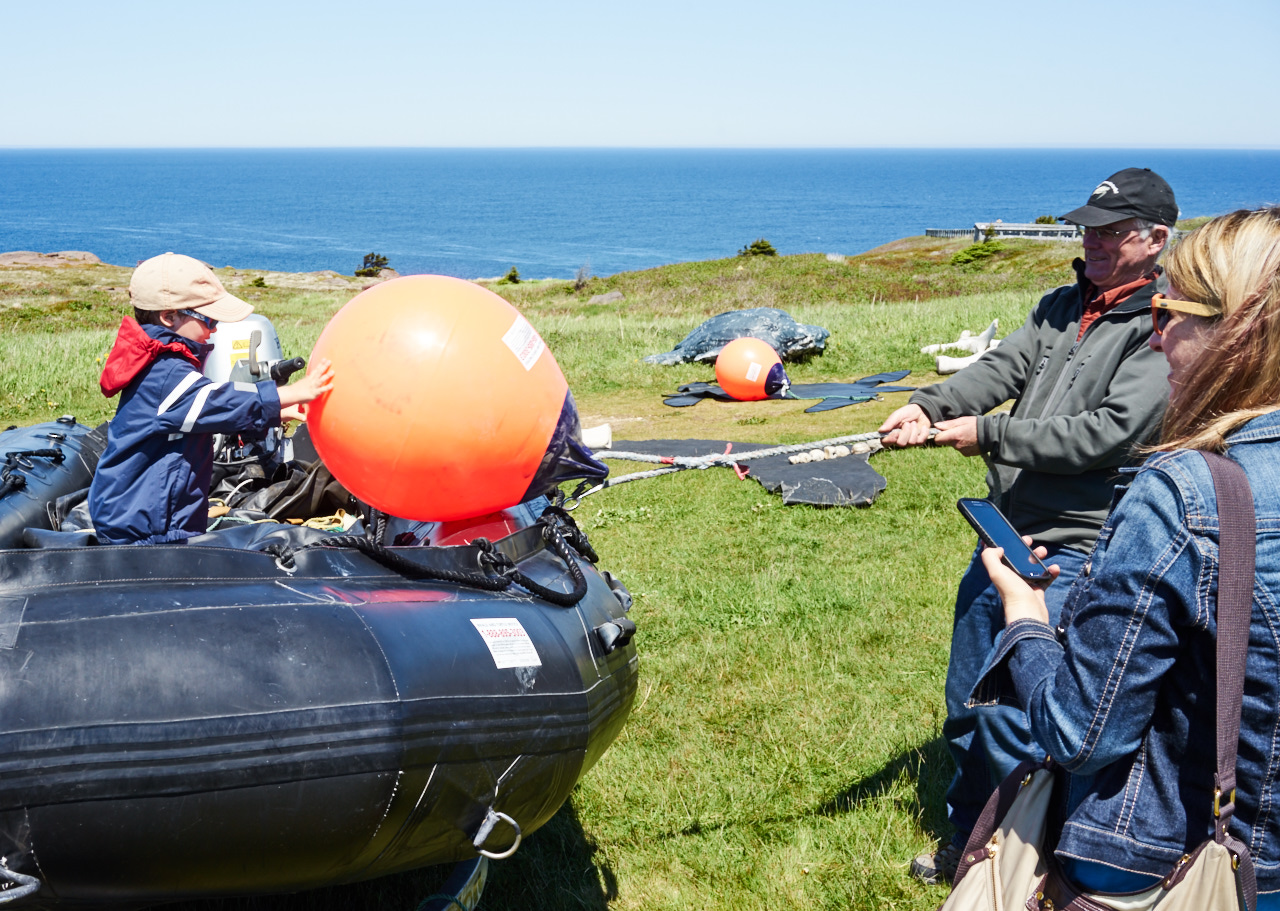

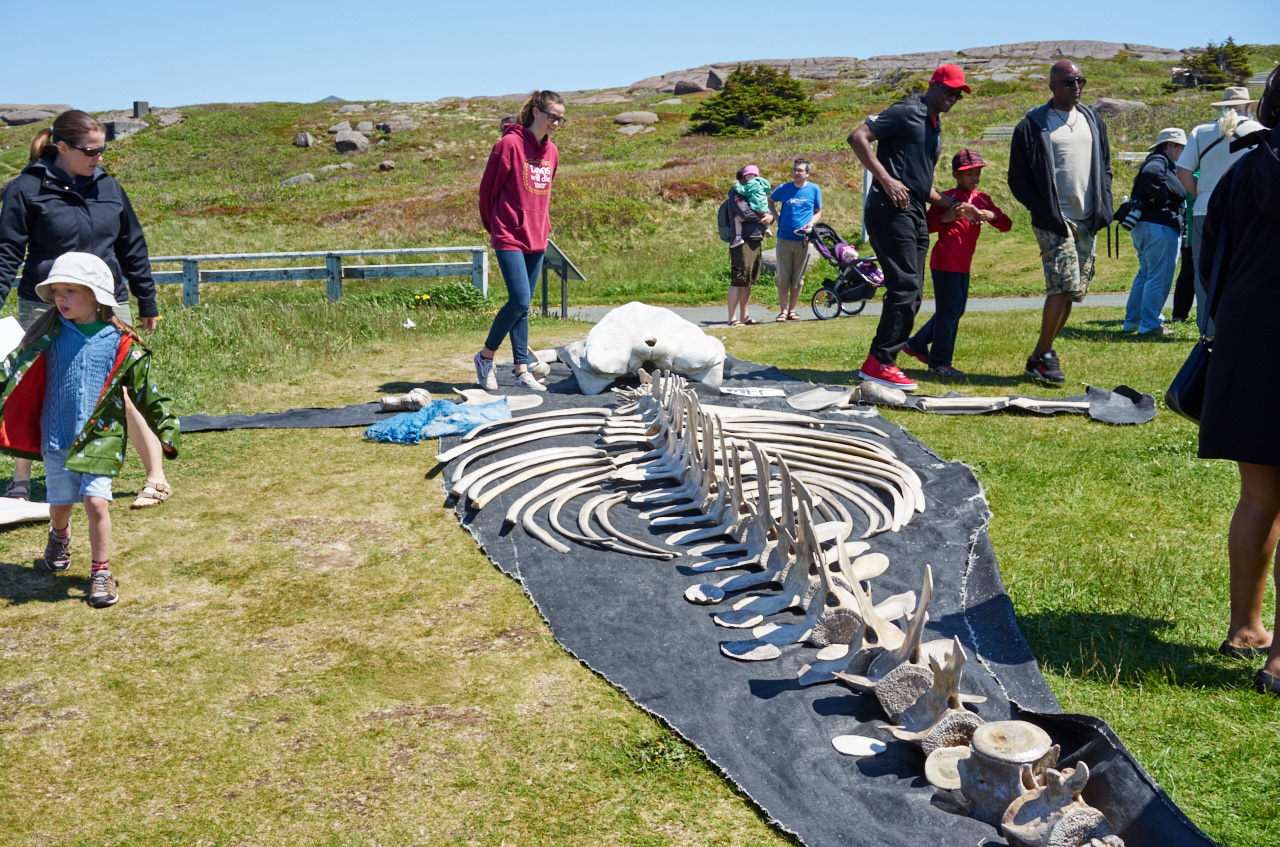
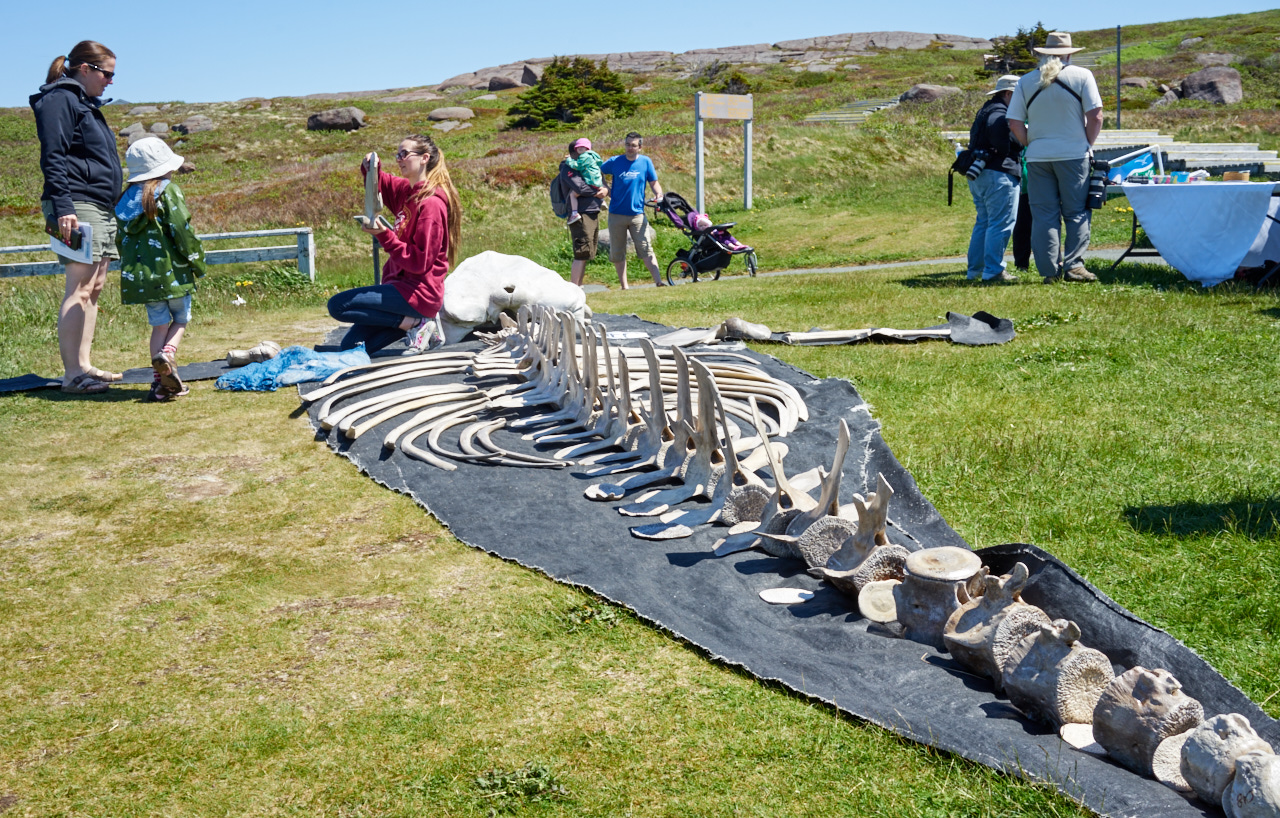
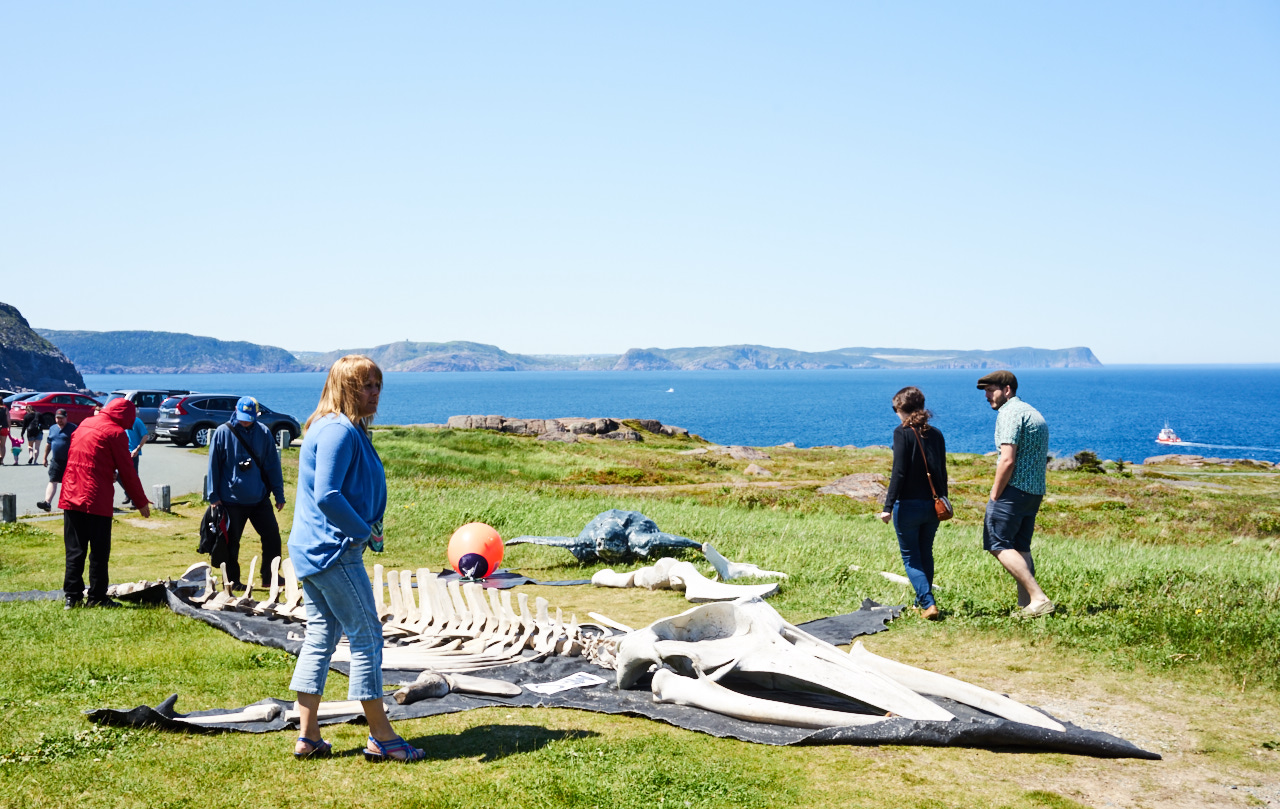
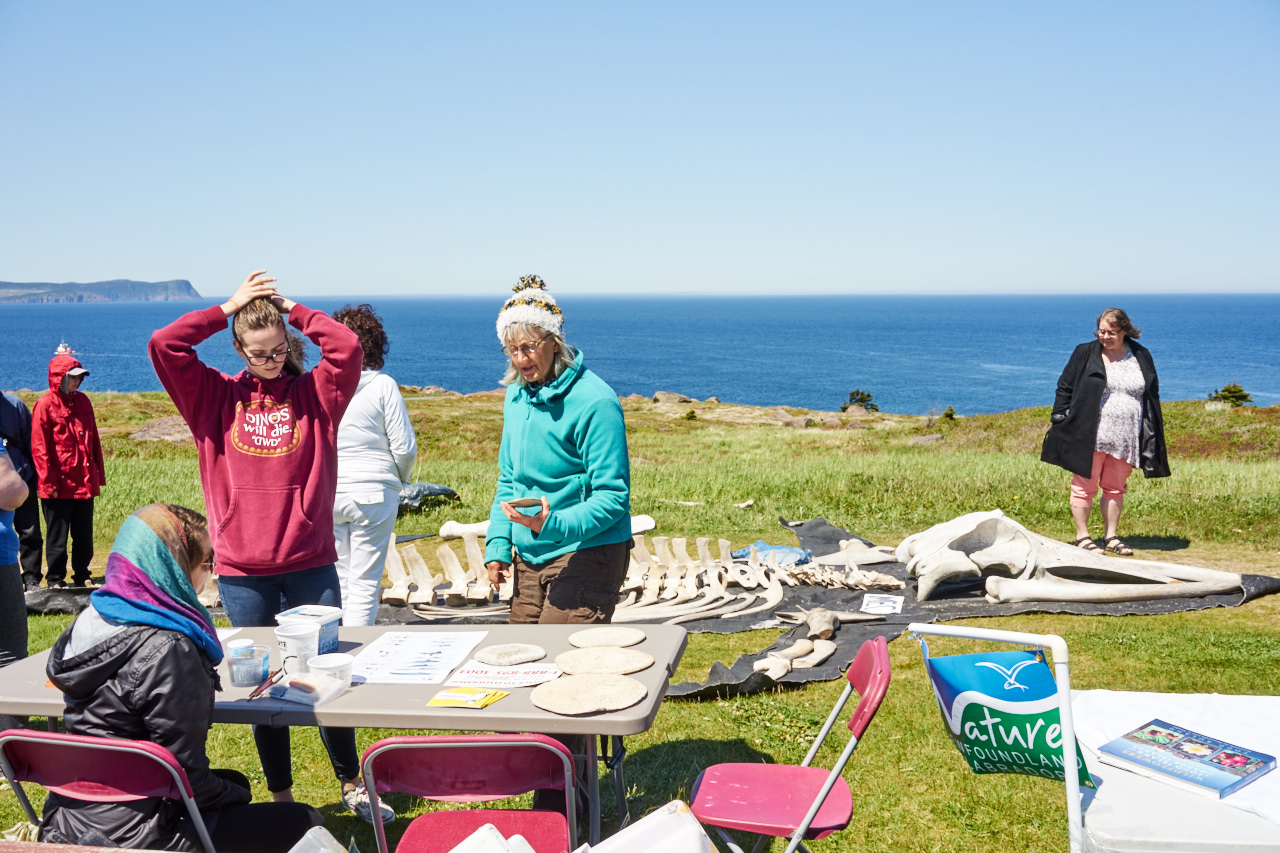
2016
Glossary of Whale Words
Baleen: Fibrous plates constructed of keratin, material much like human fingernails, grows from the roof of the mouth of some species of whales. It is used to filter small food organisms from the water.
Barnacle: A marine crustacean that attaches itself to rocks, ship bottoms and certain whales.
Beak: The snout or forward projecting jaws of a cetacean. Found on all dolphins and porpoises.
Benthic: Pertaining to the sea bottom or to organisms that live in or on the sea bottom.
Blow: The visible breath of a whale, consisting of water vapor and droplets.
Blowholes: The nostrils of a cetacean, usually located on the top of the head. Two blowholes are found in Mysticeti whales, one in Odontoceti.
Bowriding: The behavior in dolphins and porpoises involving swimming in the bowwave created by moving boats or large whales.
Breaching: The behavior in cetaceans that involves thrusting most or all of the body out of the water and landing with a large splash. Humpbacks are known for breaching.
Bull: An adult male whale.
By-catch: Animals that are caught accidentally or unintentionally by fishermen.
Calf: A baby whale.
Callosity: Rough, lumpy protrusions on the top and front of the head of right whales. It is make of keratin.
Capelin: bait for whales
Caudal: Of or near the tail or posterior part of the body
Cetacean: A marine mammal of the order of Cetacea, which includes whales, dolphins and porpoises.
Chevron: A pigmentation pattern shaped like the letter V on the back of a finback whale.
Cow: An adult female whale.
Crustacean: Of the class Crustacea, breathes through gills and has a body commonly covered by a hard shell. Includes barnacles, crab, shrimp, lobster, amphipods and copepods.
Dolphin: Sometimes used interchangeably with “porpoise,” but generally defined as having a beak, conical-shaped teeth and a falcate dorsal fin.
Dorsal: Of, toward, on in or near the top
Dorsal fin: The top fin in marine vertebrates. In some species, such as killer whales, the difference in dorsal fins between males and females, suggest that it may have signal value. Most whales have a species typical dorsal fin shape and placement, which can aid in recognizing them.
Drive fishery: In several areas of the world, whales that live in groups are fished by herding or driving them to shore. This herding is very much like the process of herding sheep. Because of the social cohesiveness of the groups, animals do not scatter but continue to shore, where the group is killed.
Echolocation: To orient, navigate, or find food by making sounds and listening for echoes reflecting from objects.
Ecology: The branch of biology dealing with the relationship between living organisms and their environment.
Endangered species: A species of animals where future survival of the group is threatened by habitat changes or excessive reduction of numbers in the population.
Exploit: To utilize for one’s own advantage or profit. Exploitation of wild animals involves the killing or harvesting of individuals in the population for one’s own use or for commercial purposes.
Extinction: The disappearance of a species forever. When all animals of a given species are gone, the species is extinct.
Falcate: Curved and tapering; sickle shaped.
Fathom: A measurement of 6 ft. (1.8 m) usually of depths of water. Roughly approximated as the length of a man’s arms outstretched, from fingertip to fingertip.
Flippers: The limbs of marine mammals, including cetaceans, pinnipeds, manatees and dugongs.
Flipper slapping: the behavior in cetaceans that involves raising the pectoral fin out of the water and slapping it on the surface. Humpbacks are commonly seen flippering.
Flukes: The horizontally oriented tail fin of cetaceans. Flukes are strong, fibrous but contain no bones.
Krill: Term in general use to describe small, shrimplike crustaceans eaten by many baleen whales.
Lob-tailing: The behavior in cetaceans that involves raising the flukes out of the water and slapping them on the surface.
Lunge feeding: Once a baleen whale has located a school of bait it will frequently dive underneath the school and push them against the surface. It then swims up, through the school with its mouth open. The whale is observed breaking through the surface of the water, frequently with its mouth still open and water streaming out of the sides of its mouth.
Mammal: A vertebrate animal characterized by warm bloodedness, hair, lungs, nursing young and giving live birth.
Mass strandings: Whales, especially toothed whales that live in close social groups, sometimes come to shore in groups. There are a number of possible explanations for such strandings, none wholly satisfactory.
Melon: the bulbous forehead of Odontoceti cetaceans, which contains oil and is thought to be involved in sound projection.
Migration: The movement of animals from one area to another with the changing seasons.
Mysticeti: The order of baleen whales, from the Greek mystax (moustache) and cetus (whale).
Navel: A depression in the abdomen where the umbilical core from the mother was attached to the fetus. Commonly the navel is used as a reference point in measuring whales.
Odontoceti: the order of toothed whales, from the Greek odous (tooth) and cetus (whale).
Pectoral fin: the flippers or forelimbs of cetaceans.
Peduncle: A stalk. In cetaceans, the tailstock between the anus and the fluke.
Pelagic: Of or living in the open ocean for from land.
Pinniped: An order of aquatic, carnivorous mammals that includes sea lions, true seals and walruses. For the Latin pinna (feather) and pes (foot) or “feather foot.”
Plankton: The marine animal and plant organisms that drift or float with wind, currents and waves in the upper layers of the sea.
Pod: A group of two or more whales.
Porpoise: sometimes used interchangeably with “dolphin,” but generally defined as having a short beak or no beak at all, spade-shaped teeth and a triangular dorsal fin.
Rorqual: Any of several baleen whales of the genus Balaenoptera having numerous longitudinal grooves on the lower surface of the body and a dorsal fin.
Rostrum: The jaws of a baleen whale elongated (telescoped) forward to enlarge the mouth cavity.
Spout: A column of spray thrown into the air by a whale when breathing.
Spy hopping: The behavior in cetaceans that involves raising the head vertically out of the water without causing much splash.
Terminal dive: Deep dive at the end of a series of shallow dives, when flukes are most likely to be seen.
Ventral: Of or situated on or near the belly or abdomen (on the lower surface of the body)
Ventral pleats: The longitudinal grooves on the undersurface of certain species of baleen whales.
Whale lice: Crustaceans in the family Cyamidae, generally yellow-white or yellow-orange, who live on certain species of cetaceans.





